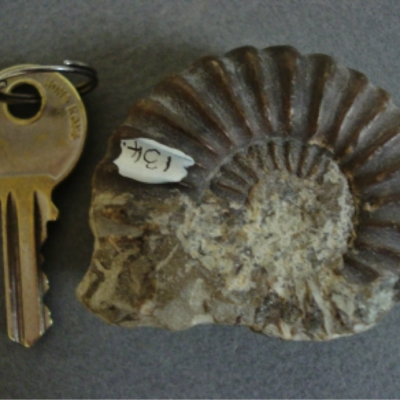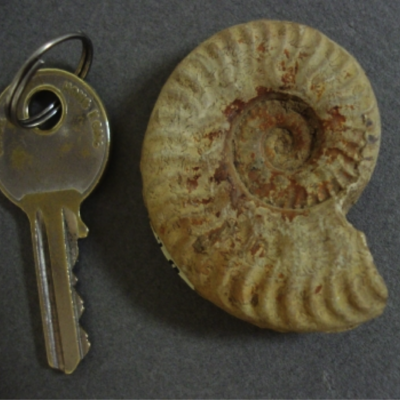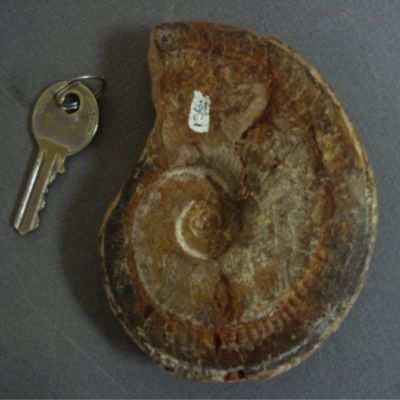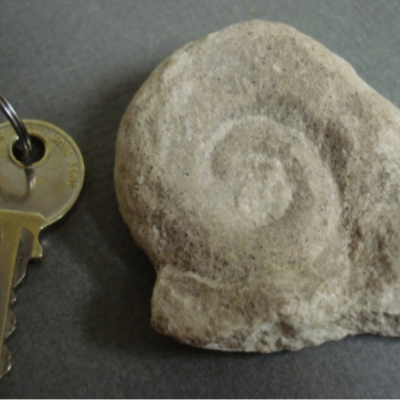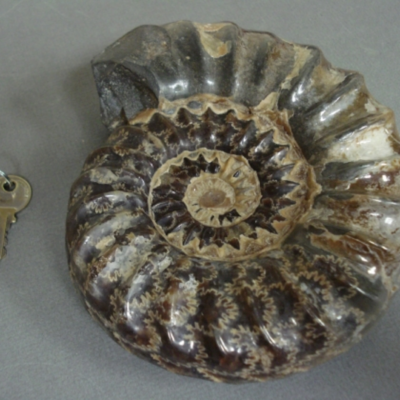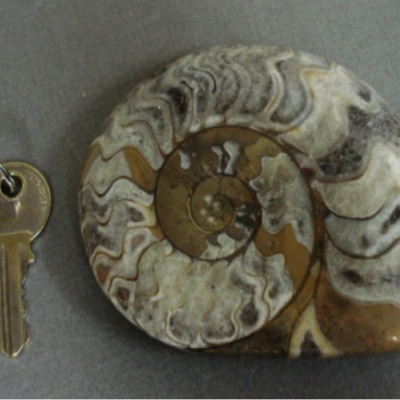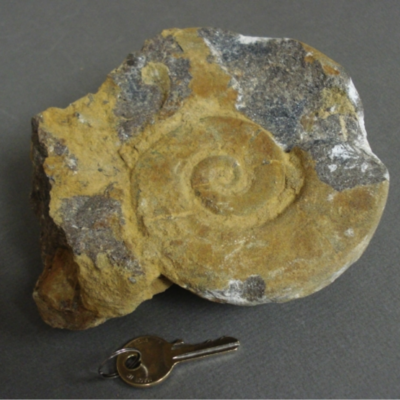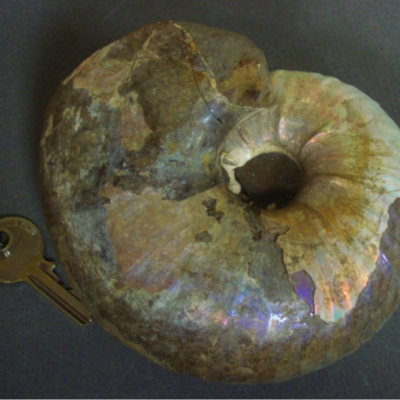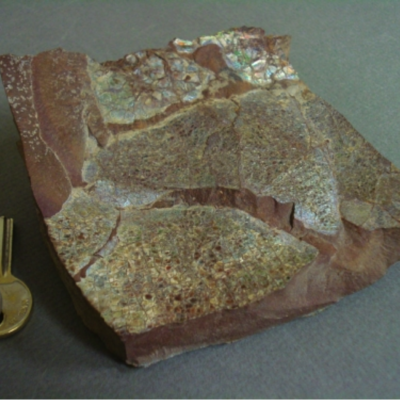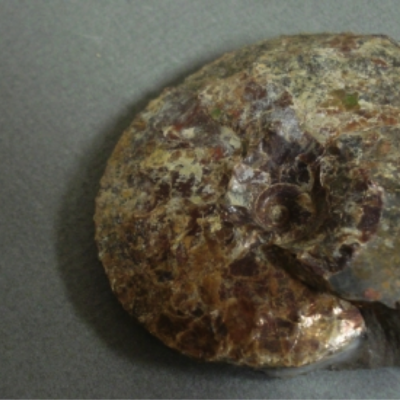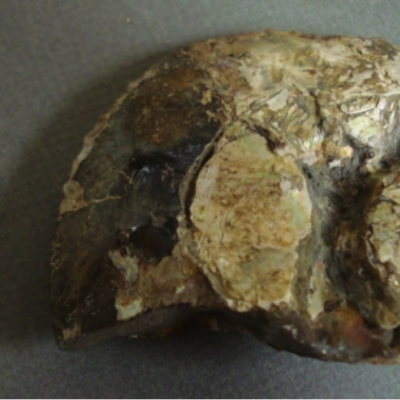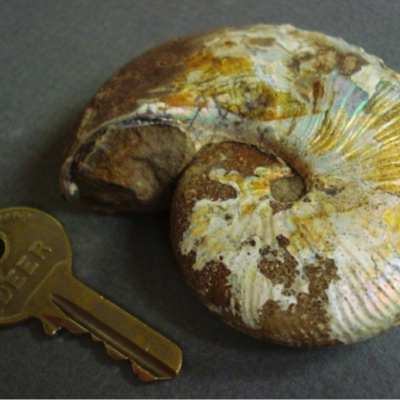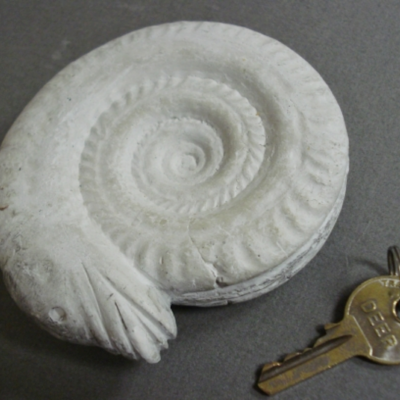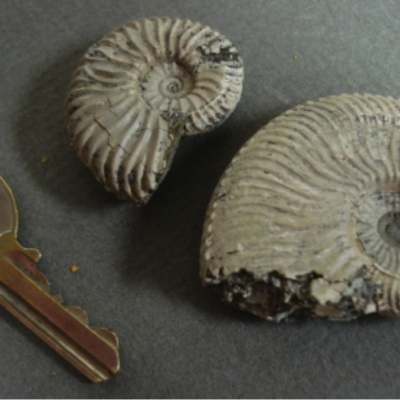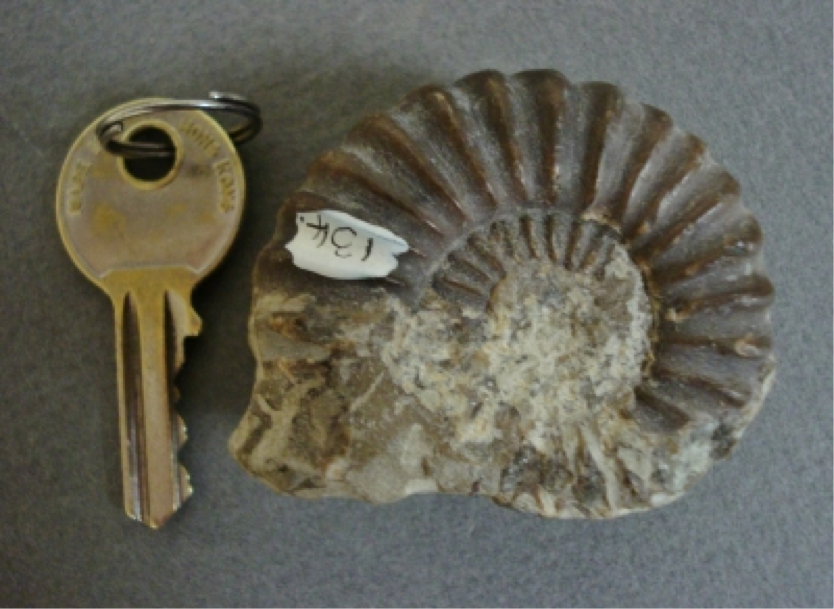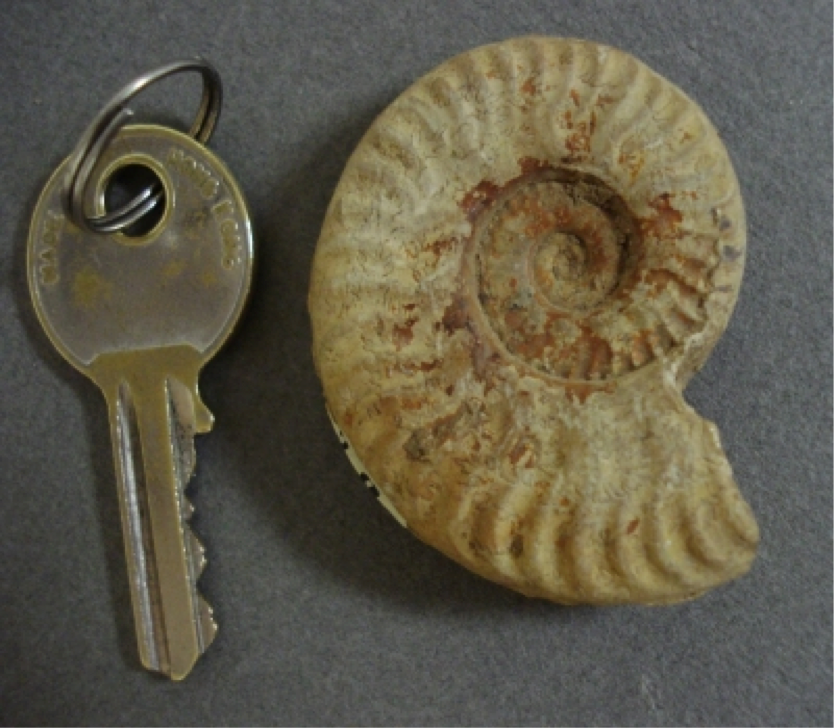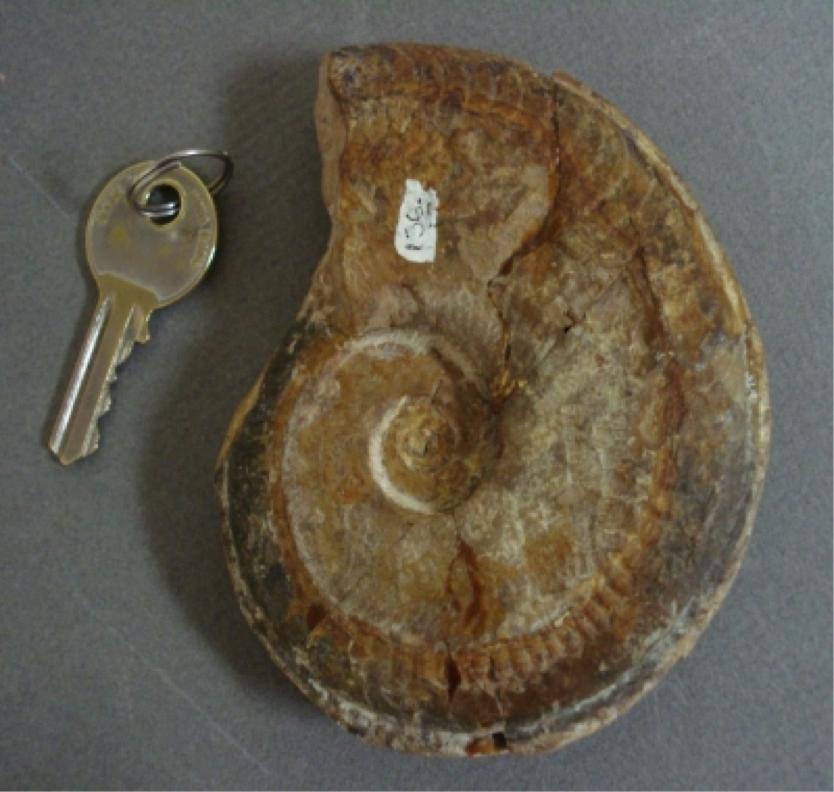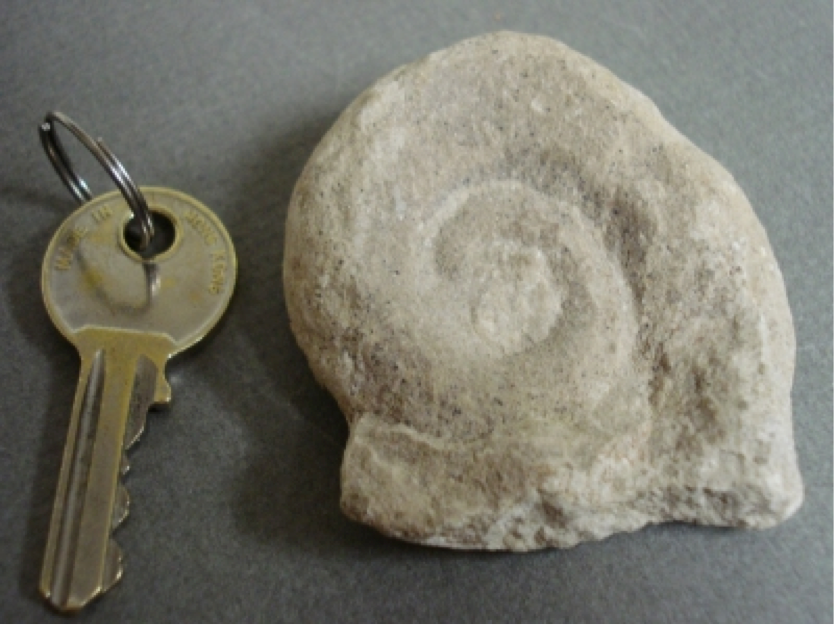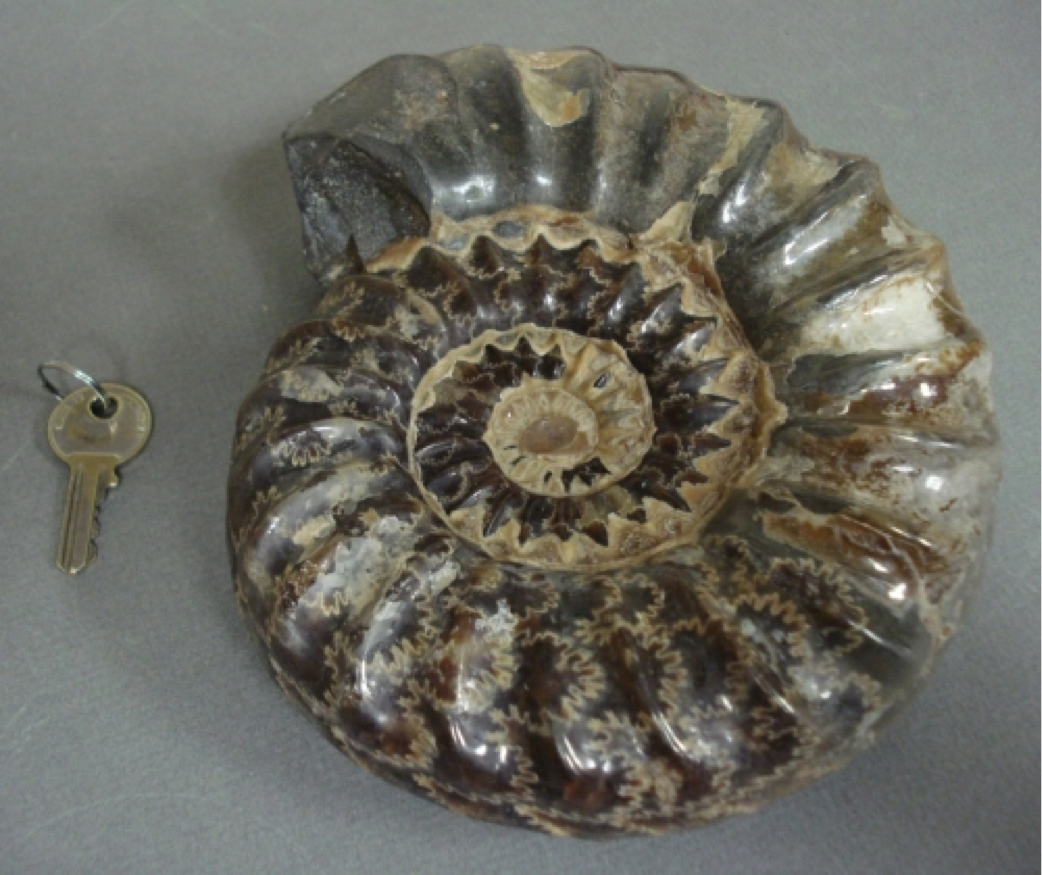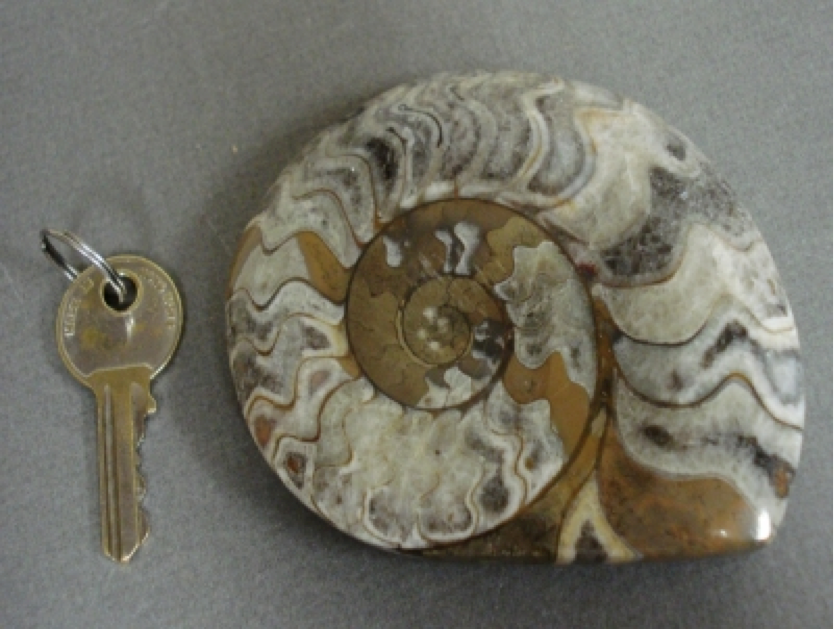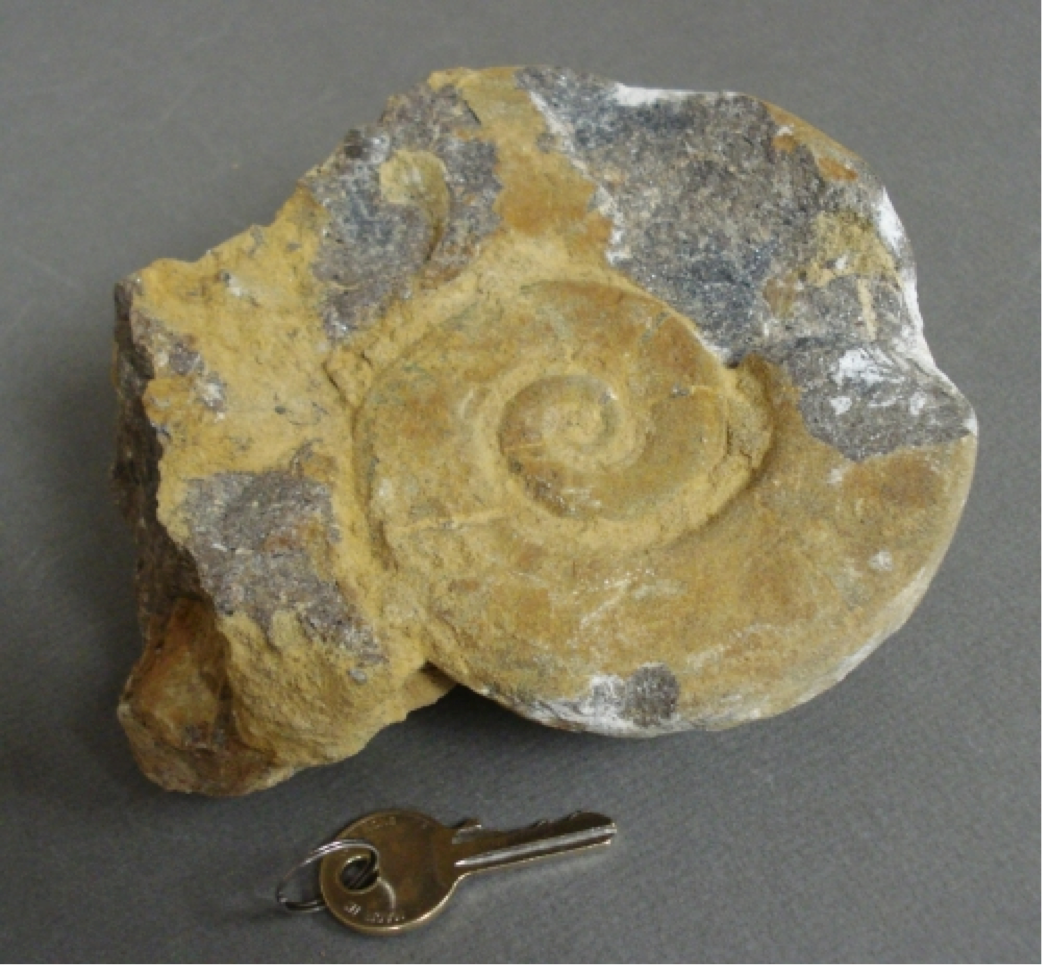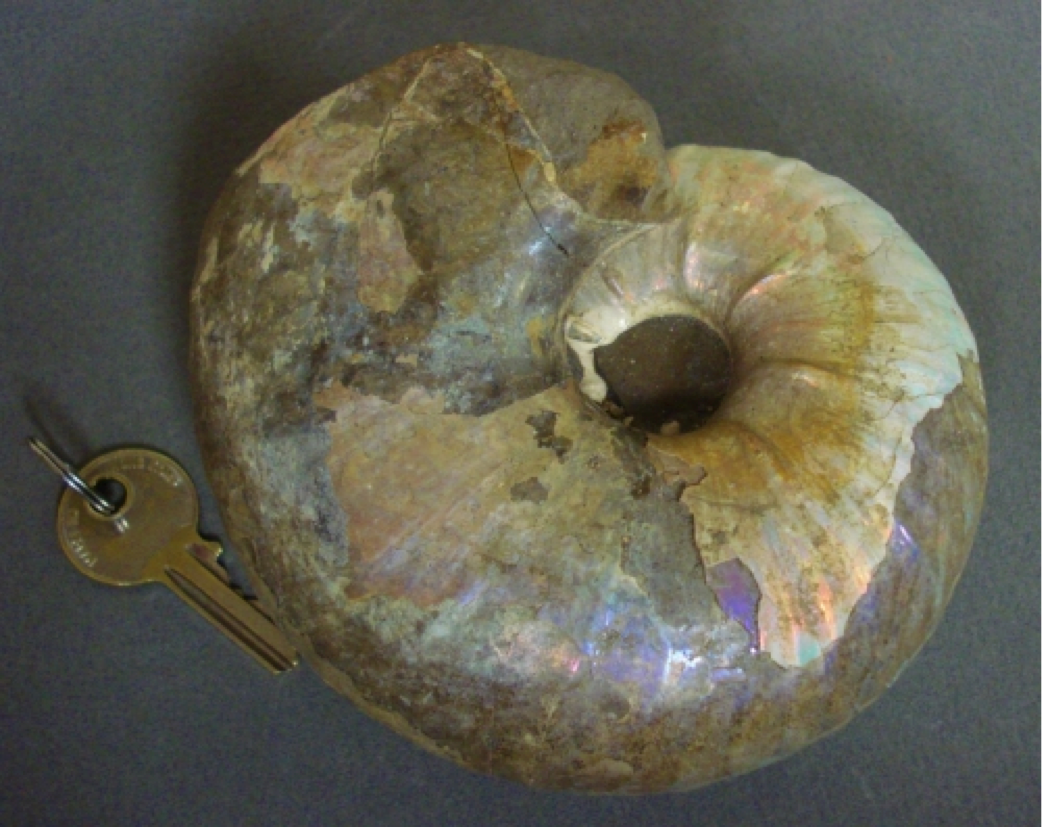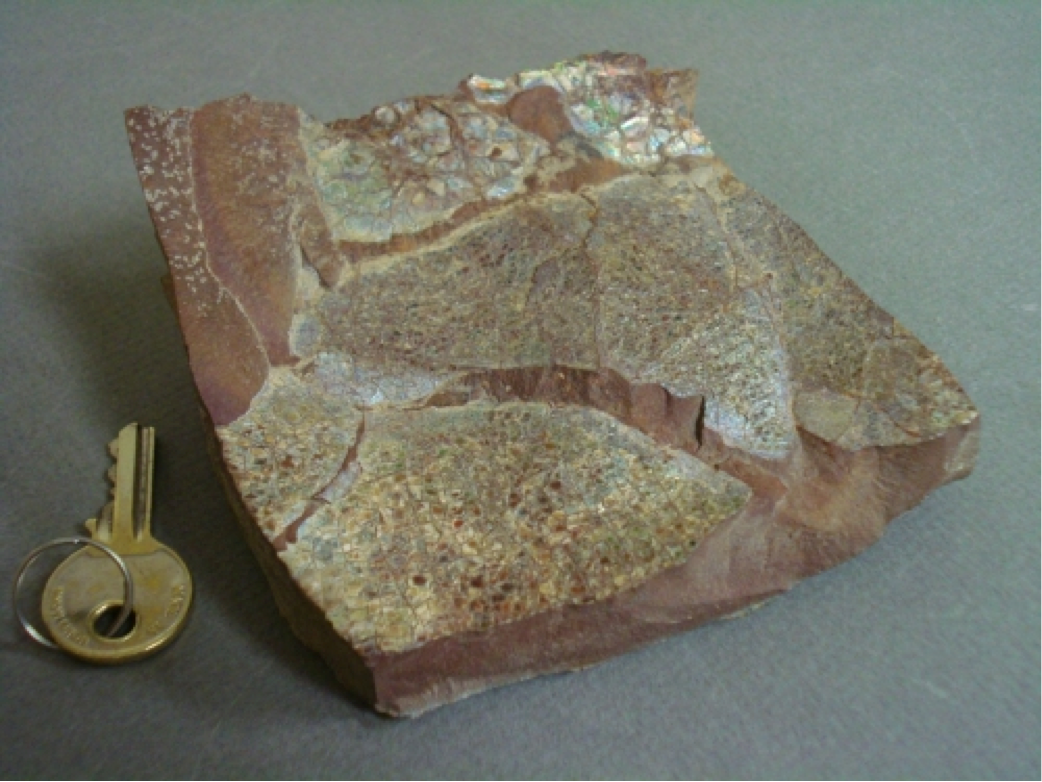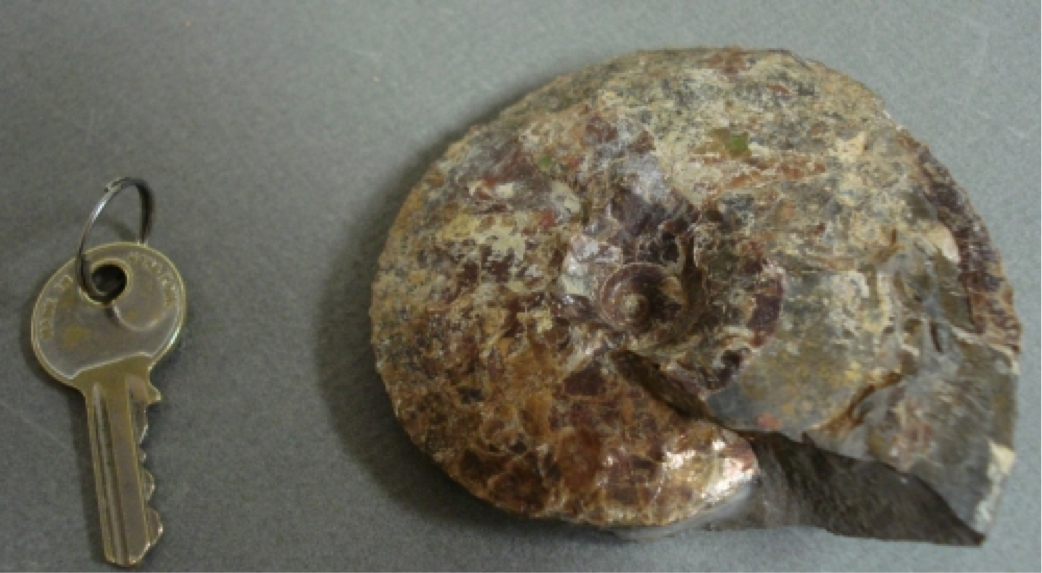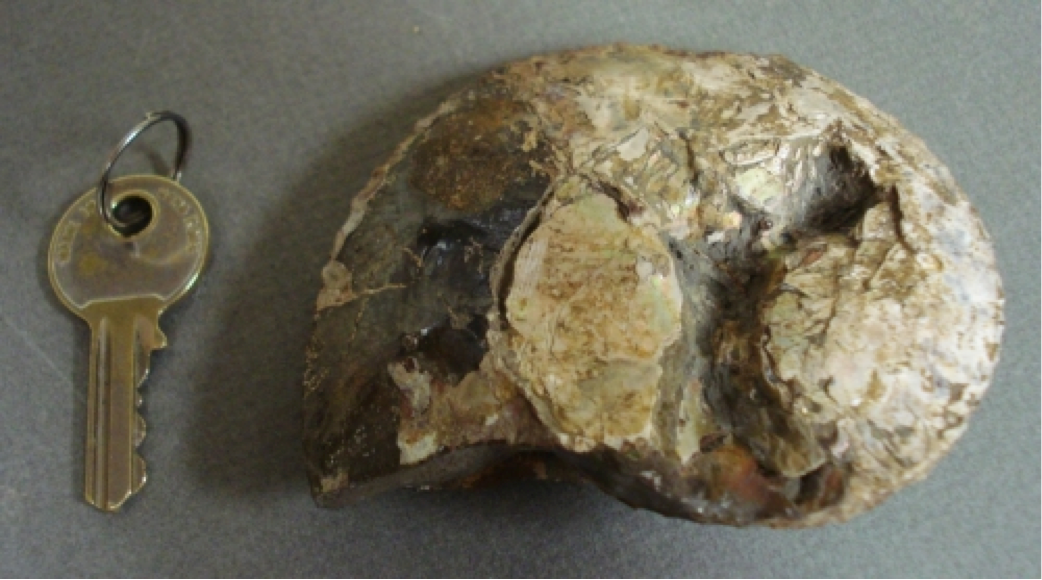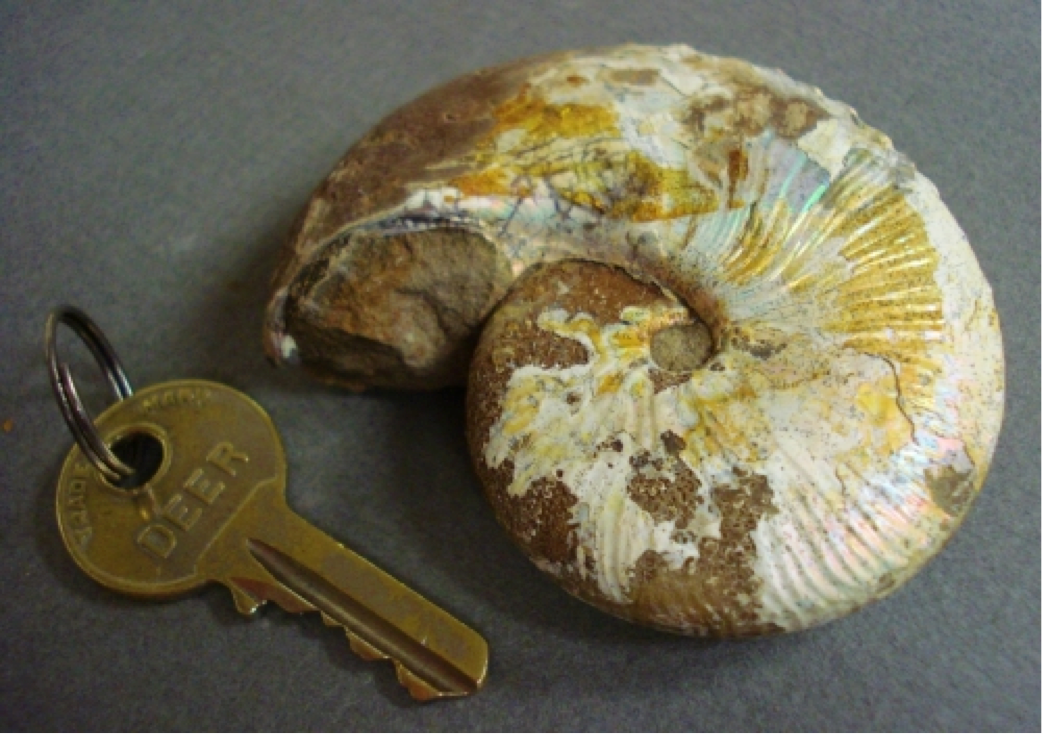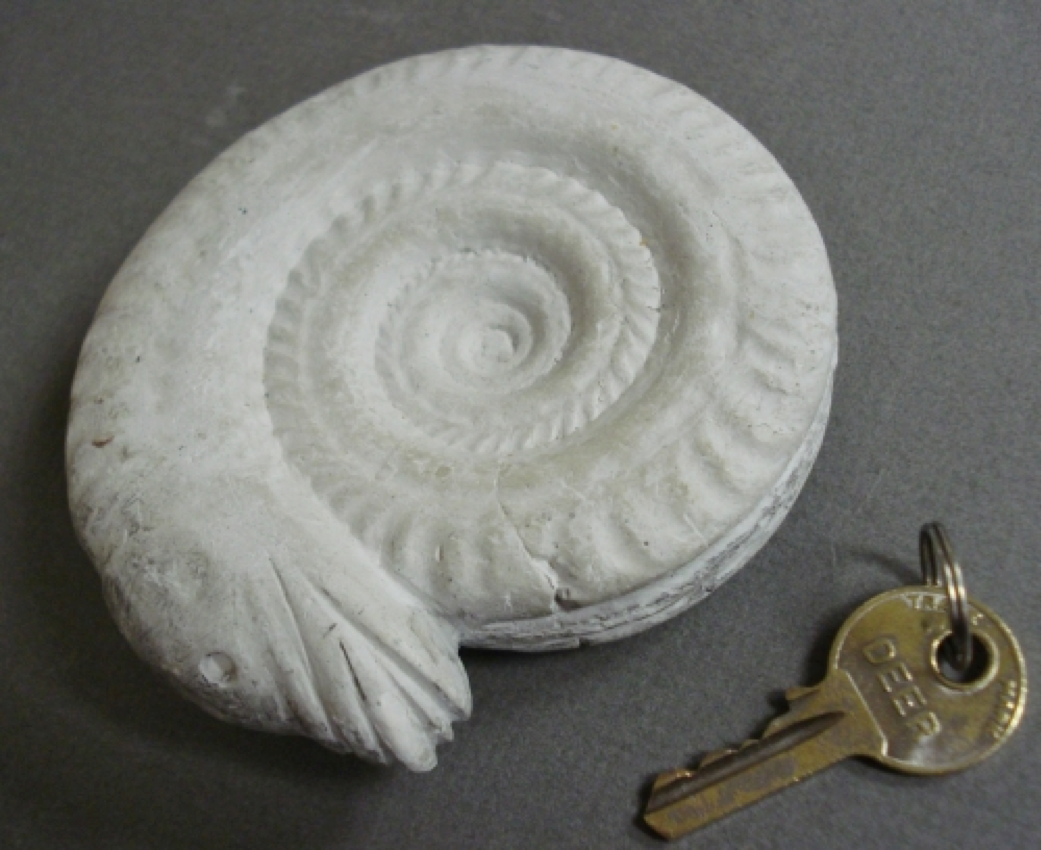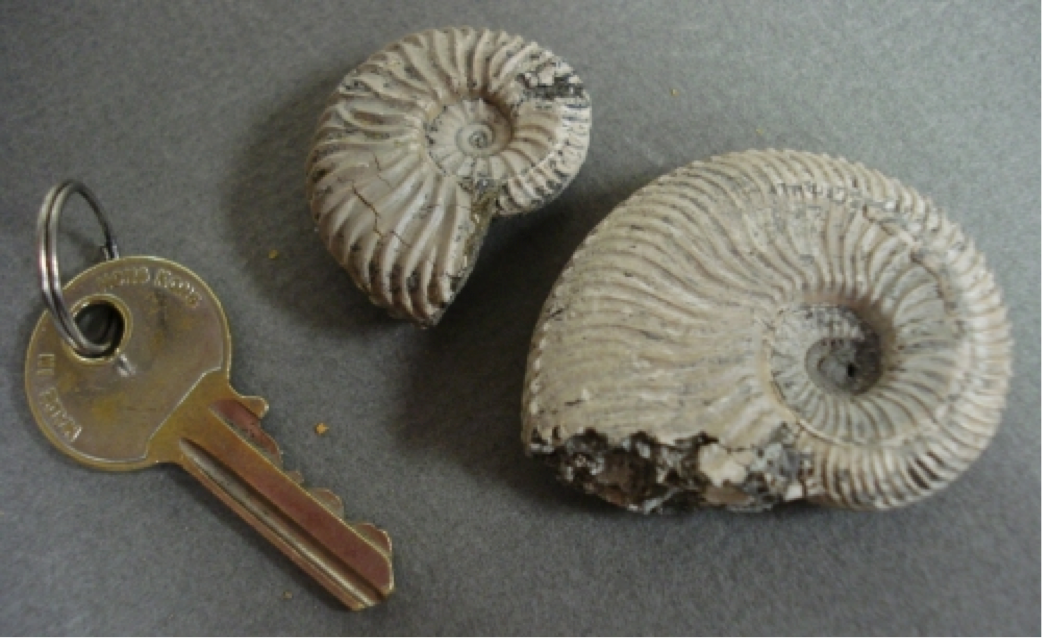Please note that the following fossil shells are not currently on display in the museum. To arrange a private tour, please contact Peter Russell.
Who?
Subclass Ammonoidea, class Cephalopoda, phylum Molluska.
Ammonites were abundant in the Mesozoic era, and went extinct at the end of the Cretaceous, about 64 million years ago (along with the dinosaurs).
Ammonites free-floated in the water, with tentacles protruding from their shells. they could propel themselves through the oceans by compressing water and expelling it, similar to the modern day octopus and squid. Large ammonites were commonly up to 1 meter in diameter, and weighed up to 100 kg. Their soft body was contained in the last chamber of a spiral shell, and new chambers would form as the creature grew. The shell was also occupied with water and gas to make the ammonite buoyant.
